30.05.2018
Watch Virgin Galactic spaceplane's dramatic test flight
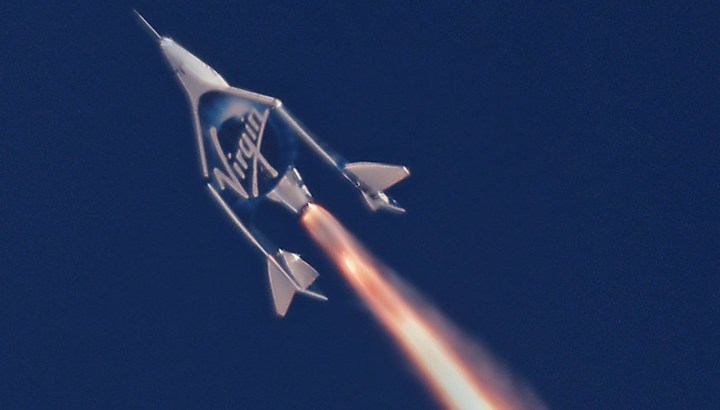
Space tourism took another step closer to reality as Virgin Galactic's VSS Unity spaceplane fired up its rocket motor and completed its second supersonic flight over the Mojave Desert in California.
The rocket fired for 31 seconds, propelling the sleek craft and its two pilots to a speed of Mach 1.9 (almost twice the speed of sound, or about 1,500 miles per hour) and a maximum altitude of 114,500 feet, Virgin Galactic said in a blog post.
"Seeing Unity soar upwards at supersonic speeds is inspiring and absolutely breathtaking," Virgin Galactic's founder, Richard Branson, said in the post. "We are getting ever closer to realizing our goals."
Branson was on hand to witness the flight, which took place about two months after Unity completed its first rocket-powered flight on April 5, 2018. That flight came about four years after the Oct. 31, 2014 crash of another Virgin Galactic spaceplane, which killed test pilot Michael Alsbury.
In today's test, Unity and its pilots, Mark Stucky and Dave Mackay, were carried aloft beneath the wings of the company's jet-powered "mothership," Eve, before being released to fly on their own. The spaceplane climbed steeply before descending and landing safely at the Mojave Air and Space Port in Mojave, Calif.
Today's flight was conducted to test Unity's handling characteristics and the performance of its control systems, according to the blog post.
Virgin Galactic is one of a small handful of companies that intend to give paying customers a chance to make brief flights into space. Among the other companies are Elon Musk's SpaceX and Jeff Bezos's Blue Origin company, which has completed several tests of its New Shepard rocket and capsule system. Blue Origin says it could begin taking customers into space later this year, CNBC reported.
Virgin Galactic has been mum about exactly when it might begin taking customers into space. But earlier this month, Branson told the BBC that "we're talking about months away, not years away."
And Branson could be one of Virgin Galactic's earliest passengers. "I'm going for astronaut training," he told the BBC. "I'm going for fitness training, centrifuge and other training, so that my body will hopefully cope well when I go to space."
Quelle: NBC News
+++
Branson pride in VSS Unity’s test flight success
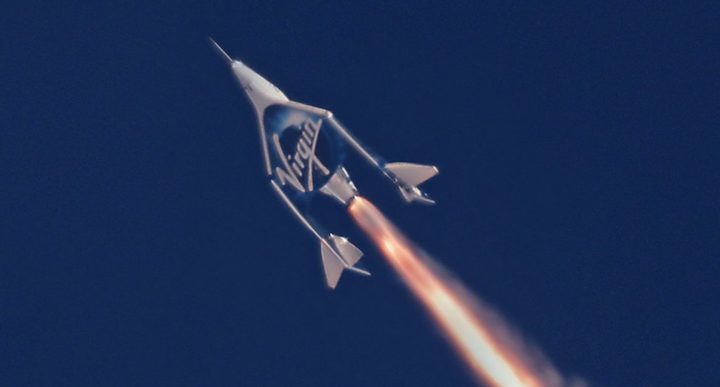
Virgin Galactic’s VSS Unity conducted her second powered test flight on Tuesday, taking another step towards being ready to enter service with paying customers. That milestone is years behind schedule, further delayed by the disastrous test flight that resulted in the loss of VSS Enterprise in 2014. However, the company is now back on an upward trajectory.
Those setbacks and delays have failed to halt Virgin Galactic’s goal of sending paying customers on a suborbital trip into space, despite growing competition from other companies such as Blue Origin – a company that is deep into its test program with the New Shepard vehicle while preparing to enter the realm of orbital launches.
Virgin Galactic’s return from the disaster of the 2014 test failure is centered around a replacement spacecraft called VSS Unity. Numerous tests had already been conducted on the upgraded vehicle ahead of the milestone of the first propulsive test less than two months ago.
That test was a success, allowing for a relatively speedy turnaround for the second powered test on Tuesday.
The focus of the latest test flight was to learn more about the spaceship’s supersonic handling characteristics and control system’s performance with vehicle parameters that were closer to the ultimate commercial configuration.
“This involved shifting the vehicle’s center of gravity rearward via the addition of passenger seats and related equipment,” noted Virgin Galactic, potentially pointing to the test program entering the final stretch before allowing passengers on the vehicle.
However, a full duration flight – highlighted by a full duration burn of the rocket motor – will be required before the end of the test program is in sight.
For this flight, the motor burned for the planned 31 seconds – which is less than the full flight duration – propelling Unity to a speed of Mach 1.9 and an altitude of 114,500 ft.
At this point, Unity’s re-entry feathering system was deployed for the initial descent before the final glide home to a smooth runway landing at the Mojave Air and Space Port.
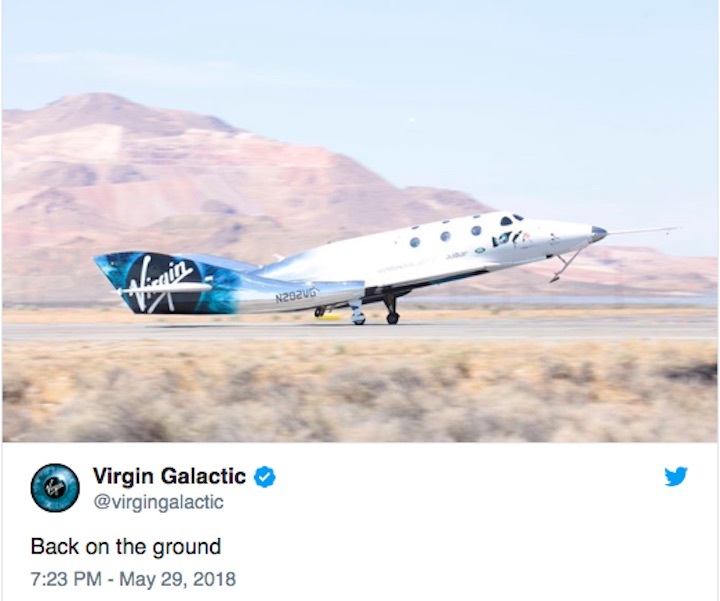
“It was great to see our beautiful spaceship back in the air and to share the moment with the talented team who are taking us, step by step, to space,” noted Virgin Galactic boss, Sir Richard Branson, who was at Mojave for the test. “Seeing Unity soar upwards at supersonic speeds is inspiring and absolutely breathtaking. We are getting ever closer to realizing our goals. Congratulations to the whole team!”
Branson was at the center to also take in a tour of the facilities of The Spaceship Company (TSC), Virgin’s Galactic sister company. TSC is focused on manufacturing next generation aerospace vehicles, with a primary focus on new spaceships for Virgin Galactic’s future fleet. Notably, Virgin Galactic noted Branson viewed the next two spaceships on the TSC’s manufacturing line, as well as the production facilities for TSC’s spaceship rocket motors.
For this latest test with VSS Unity, the pilots were Dave Mackay and Mark “Forger” Stucky. In addition to the pilots of VSS Unity, CJ Sturckow and Nicola Pecile were the pilots of the carrier aircraft, VMS Eve.
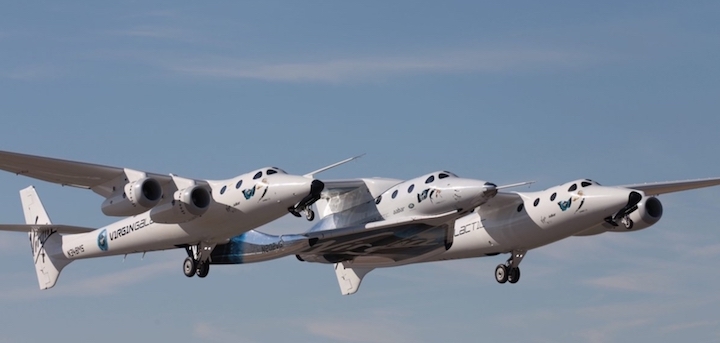
The teams will now conduct flight data review for this flight and continue planning preparations for the next flight. No date was provided on the schedule for that third flight or if it will include a full duration burn of the motor.
However, Branson – who is set to be one of the first passengers on the vehicle when she passes her test program – was understandably overjoyed with the performance of the spacecraft.
“Today we saw VSS Unity in her natural environment, flying fast under rocket power and with a nose pointing firmly towards the black sky of space,” he added. “The pathway that Unity is forging is one that many thousands of us will take over time, and will help share a perspective that is crucial to solving some of humanity’s toughest challenges on planet Earth.”
Quelle: NS
---
Update: 31.05.2018
.
Richard Branson says Virgin Galactic is '2 or 3' flights away from taking people to space
- Virgin Galactic reached halfway to its goal in the second powered flight of its Unity spacecraft on Tuesday.
- There will be about "two or three more flights before we're actually in space," founder Richard Branson told CNBC after the flight.
- Branson will be one of the first people Virgin Galactic will send to space.
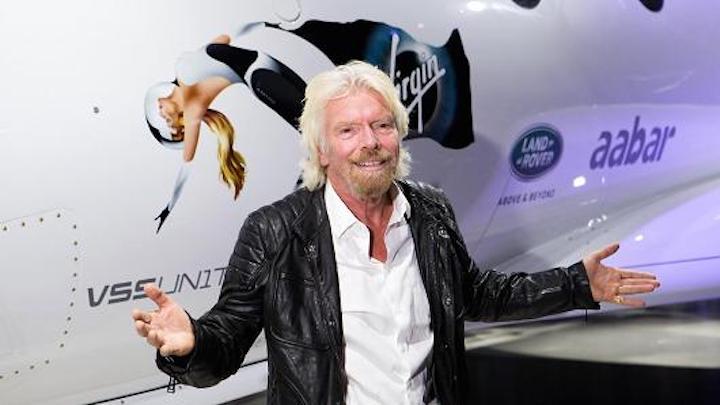
Virgin Galactic reached nearly halfway to space in the second powered flight of its Unity spacecraft Tuesday, putting the company only months away from launching its first commercial passengers.
"It will be something like two or three more flights before we're actually in space," founder Richard Branson told CNBC after the second test flight, which he called "a tremendous step in the right direction toward accomplishing our goals."
Branson's space company has "a step-by-step cautious approach" in its testing program, he said, doing "whatever it takes to make absolutely certain that we've put everything to bed" before trying to send humans into space. Tuesday's flight was its second rocket-powered launch since the fatal crash of its Enterprise spacecraft on Oct. 31, 2014. Unity underwent extensive engine testing and seven glide tests before Virgin Galactic said it was ready to make another rocket-powered flight.
Once Virgin Galactic has "a safe craft" that can reach more than 264,000 feet, Branson said, he will go up.
"Soon after that, we'll start taking some of our astronauts up," Branson said.
A key part of Virgin Galactic's plan to turn space tourism into a business is rapid reuse of the spacecraft. Unity was lifted into the air by the jet-powered mothership Eve, taking off from the Mojave Air and Space Port in California. It was released from under Eve's wing about an hour later, when Unity's rocket engine roared to life, sending the spacecraft at about twice the speed of sound to 114,500 feet. Unity then returned, using a technique called feathering to re-enter the atmosphere and glide back down to a landing on the same runway it had left.
This technique of reaching space means Virgin Galactic was able to turn Unity around only 54 days after its first launch. Coincidentally, that's the same amount of time it took NASA to launch, land and launch again the space shuttle Atlantis in 1985 — the fastest turnaround during the shuttle program.
"Ultimately we'll be able to cut it down to every four days," Branson said. He added that the goal of four days will only be realized "well after the test program is completed."
For now, Branson is focused on his company creating a reliable means of letting more people experience weightlessness. In the latest test flight, Unity's rocket engine fired for 31 seconds. Virgin Galactic will likely aim to fire the engine for 40 seconds on the next flight, according to Branson, and 50 seconds on the following flight.
"And then, if that's all gone according to plan, 63 seconds will be what will take us into space," Branson said.
Competing with Jeff Bezos and Blue Origin
Branson is neck and neck with fellow billionaire Jeff Bezos as their companies close in on launching tourists into space. Branson said he does "not see this as a race," despite the comparison often arising.
"Both companies need to succeed," Branson said. "If one beats the other by a couple of months, one way or the other, as far as the long term is concerned, that's not important."
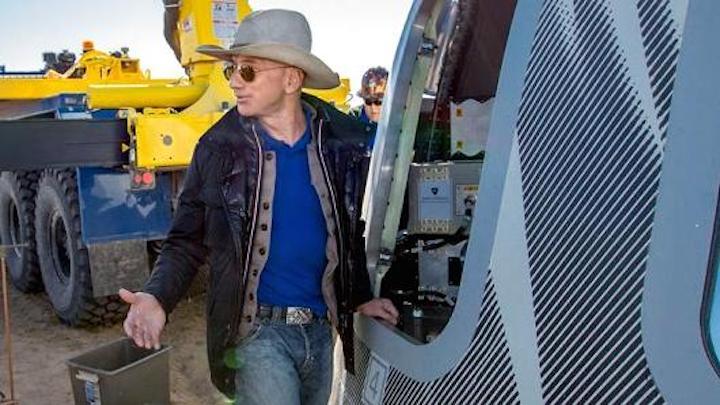
Bezos has been pouring nearly $1 billion a year from his Amazonholdings into Blue Origin, the rocket-builder he founded in the pursuit of reaching zero-gravity conditions. Blue Origin is in the final stages of testing its New Shepard rocket, most recently launching its human-carrying capsule to 322,405 feet in an eighth successful flight on April 29. Blue Origin CEO Bob Smith told CNBC on April 18 that he hopes his company will be launching tourists to space on New Shepard this year.
'No ride anywhere in the world that will be like it'
Branson said Tuesday he could imagine the pilots' reaction as he watched the spaceship blast skyward "straight up in front of us."
"When you are talking about going from naught to 3,500 mph in 8 seconds straight up — there will be no ride anywhere in the world that will be like it," Branson said.
He said he believes his first spaceflight "will be the most important day of my life" and he hopes it will be the beginning of meaningful experiences for many others.
"That hopefully will open up space for hundreds of thousands of people in the years to come," Branson said.
Branson compared today's private space companies with the fledgling commercial air industry in the 1920s, much like SpaceX founder Elon Musk did earlier this month.
While Virgin Galactic has more than 700 would-be astronauts signed on to launch, tickets are priced at $250,000 per flight. When commercial air travel was developing, Branson said, "it cost a [relatively] similar sum of money to send wealthy people across the Atlantic [Ocean]. ... And over the years the price came down to a level where enormous quantities of people were able to go."
Virgin Galactic is also "trying to get to a level where we are completely environmentally neutral," Branson said. He explained that he does not want Virgin Galactic to be contributing more harm to the Earth than it gives back, even as it helps unlock new discoveries for humanity.
"Therefore people can go to space without damaging the environment and really enjoy the wonderful overview that has meant so much to the people who have already been to space," Branson said.
Quelle: CNBC


